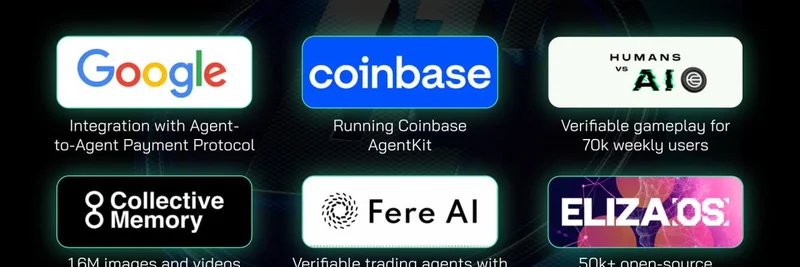In the fast-evolving world of blockchain and AI, understanding how these technologies blend can feel overwhelming. But a recent thread from @Defi0xJeff on X breaks it down neatly. He shares an insightful illustration that splits the Crypto AI landscape into four layers: Infrastructure, Middleware, Marketplaces, and Applications & Services. This guide is perfect for beginners, and as someone who's covered crypto extensively, I'll walk you through it with simple explanations. Think of it like a stack of building blocks—each layer supports the one above, creating a decentralized AI ecosystem that's more accessible and innovative.
The Foundation: Infrastructure Layer
At the bottom of the stack is the Infrastructure layer, which handles the heavy lifting for AI operations on the blockchain. This includes decentralized training and model creation, where AI models are built using distributed resources instead of centralized servers. Projects like Gensyn and Together.ai are key players here, allowing anyone to contribute computing power for training large models.
Then there's privacy and verifiability, ensuring data stays secure and computations can be trusted without revealing sensitive info. Think of tools like Fhenix or Zama, which use advanced cryptography to keep things private. And don't forget inference networks, where trained models run predictions—Bittensor stands out with its TAO token, blending AI with tokenomics in a way that sometimes sparks meme-like hype in the community.
This layer is crucial because it democratizes AI, moving away from big tech giants controlling all the compute power. If you're into meme tokens, keep an eye on projects here; tokens tied to AI infra often see wild volatility as adoption grows.
The Connector: Middleware Layer
Moving up, the Middleware layer acts as the bridge, making it easier for developers to build on the infrastructure. Here, you'll find decentralized compute providers like Akash Network, Golem, io.net, and Sonm, which offer on-demand GPU resources through blockchain marketplaces.
Inference providers handle the actual running of AI models, with projects like Gensyn optimizing for speed and cost. Coordination layers, such as Bittensor, help orchestrate these resources, ensuring efficient distribution. Other notables include Lit Protocol for secure data handling and various oracles for feeding real-world data into AI systems.
This layer is where the magic happens for scalability. Without it, connecting raw compute to useful apps would be a nightmare. For blockchain practitioners, middleware tools can supercharge your projects, and some even have token models that echo meme coin dynamics—community-driven and speculative.
The Hub: Marketplaces Layer
Next is the Marketplaces layer, where AI resources get bought, sold, and traded. Think of it as an eBay for AI models, datasets, and services. Platforms like Vast.ai or Ocean Protocol allow users to monetize their AI assets in a decentralized way.
This layer fosters innovation by creating economic incentives. Got spare GPU power? List it here. Need a custom model? Bid on one. It's all powered by tokens, which can sometimes turn into trending memes if the project catches fire on social media.
For meme token hunters, marketplaces are goldmines. Tokens like OCEAN from Ocean Protocol have seen pumps based on AI hype, blending utility with speculative trading.
The User-Facing: Applications & Services Layer
At the top are Applications & Services, where everyday users interact with Crypto AI. This includes dApps that use AI for things like personalized recommendations, automated trading, or even generative art. Examples might include chatbots on decentralized networks or AI-driven DeFi protocols.
Projects like SingularityNET bring AI services to the masses, letting you access tools without needing to understand the underlying tech. It's the most visible layer, and as AI integrates more with Web3, expect meme-inspired apps to pop up—think AI-generated memes traded as NFTs.
Why This Matters for Meme Tokens and Beyond
@Defi0xJeff's thread highlights how Crypto AI isn't just tech jargon; it's a growing sector with real potential for disruption. With layers stacking up like this, it opens doors for meme tokens to thrive in AI niches. Tokens like TAO from Bittensor or others in inference could become the next big thing, driven by community buzz and utility.
If you're diving into blockchain, start exploring these layers. Check out resources like the full guide mentioned in the thread for deeper dives. And remember, while exciting, always do your own research—crypto and AI are volatile fields.
For a visual breakdown, imagine a stacked diagram with icons for each project, from Ethereum in middleware to Bittensor coordinating it all. It's a handy map for navigating this space.



